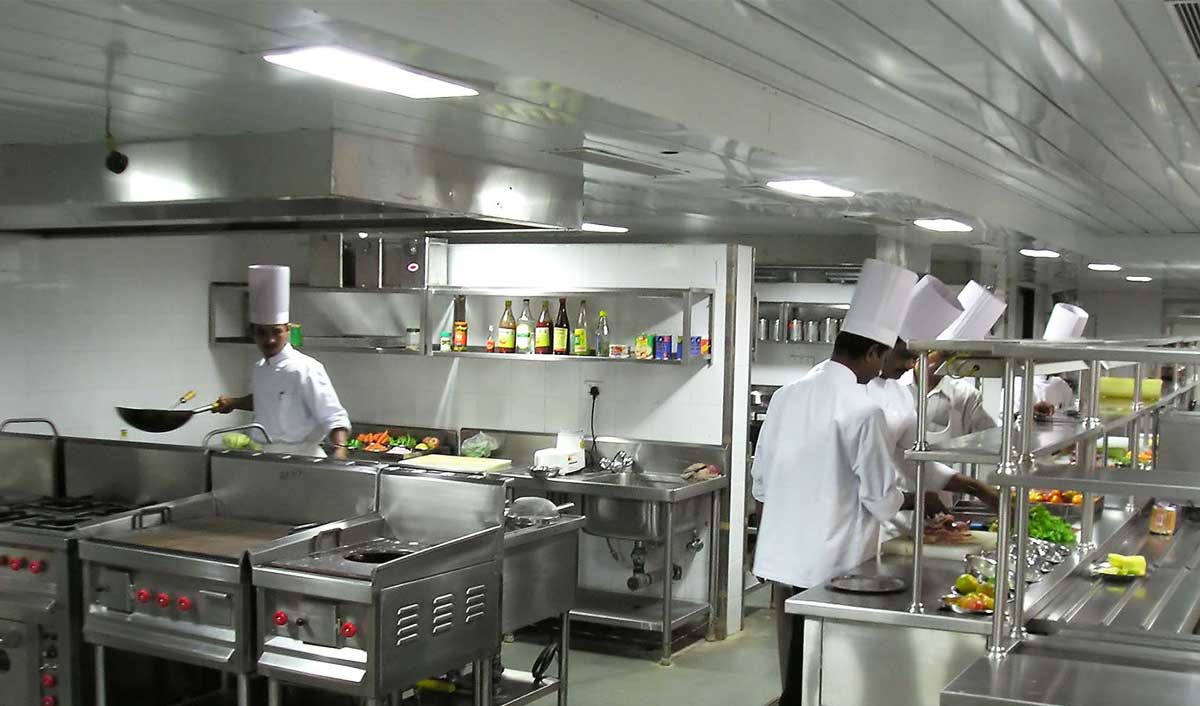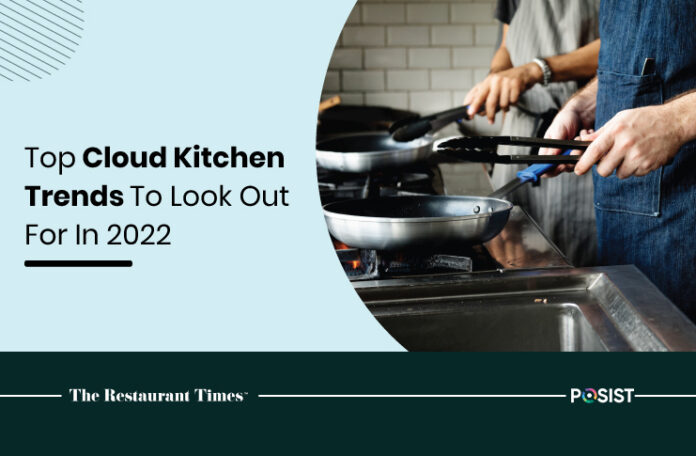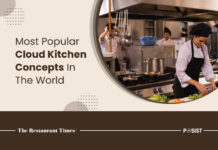As a result of shifting demographics, increased disposable incomes, urbanization, and improved lifestyles, the foodservice industry has seen tremendous expansion in recent years. Growing demand has triggered technological advances in the foodservice industry. A concept known as cloud kitchen has emerged as a result of these advancements. A cloud kitchen also called a “ghost kitchen” or “virtual kitchen,” is a commercial culinary environment that provides food enterprises with the tools and resources they need to prepare menu meals for delivery and takeout. Unlike traditional brick-and-mortar establishments, cloud kitchens enable food businesses to produce and deliver culinary delicacies with minimal overhead.
The cloud kitchen has several benefits, including lower investment, easy expansion opportunities, increased efficiency, multiple brands under one roof, and so on. It is divided into two categories: kitchen type (independent model, shared model, and aggregator managed model) and delivery type (independent model, shared model, and aggregator managed model) (delivery only & delivery and takeaway).
4 Cloud Kitchen Trends To Look For In 2022
Here are some cloud kitchen trends to look for in 2022.
1. Growth And The Optimum Cloud Kitchen
In essence, internet, ghost, or cloud kitchens are enterprises that do not have the physical capacity to serve walk-in clients and focus solely on delivery orders. When compared to a dine-in restaurant, the concept has numerous advantages: it reduces rentals, takes less capital investment to set up, and requires fewer staff and overhead costs to operate. Many traditional restaurants have switched to the cloud-kitchen approach in recent years, especially since the pandemic, because of these inherent benefits. Many first-time restaurateurs loved the approach since it decreased the risks involved in creating a cuisine brand from scratch.
During this time, however, just a few people managed to scale quickly with the model. Significant supply chains will arrive in cities with local entrepreneurs setting up cloud kitchens to meet demand. As they continue to expand, food aggregators will drive demand with a slew of discounts. While the goal in larger areas will be to increase order frequency, for ‘new’ regions it will be to bring in first-time consumers. The reason for this is that cutting operating expenses isn’t enough to ensure success; it all comes down to offering a fantastic service experience and doing so consistently and efficiently. While cloud kitchens cut operating expenses, they don’t help with a variety of other scaling-up issues.
2. Innovations And Investments
Kitchen as a service, kitchen infrastructure as a service, brand franchising, brand aggregation, and other model innovations will continue to grow as businesses seek to carve out their niches in this market. Food is not a winner-take-all situation. While this means you’ll be spoiled with choice when it comes to biryani, there will still be a few huge, well-funded players that will expand beyond 100 kitchens and benefit from economies of scale. Strong online-first brands will begin to emerge. During this era of the industry, everyone will experience tremendous expansion, but there will also be periods of consolidation, resulting in the emergence of a few large firms.
In a country with few significant food companies, this year will be a watershed moment, with a new entry into the 100 million revenue club. To keep costs low, large Cloud Kitchen operators will continue to establish solid supply chains and use technology to automate kitchens. Because this is a relatively new business, technology will serve as the foundation for growth, whether in marketing, kitchen operations, supply chain management, or human resource management. To improve the whole consumer experience, there is plenty of space for innovation in terms of how food is made, packaged, and delivered.

3. Zomato and Swiggy? New Competitors
While aggregators are a terrific way for cloud kitchens to discover new products, the high commissions required on each order affect the bottom line adversely. To begin creating a direct relationship with the customer, cloud kitchen firms may experiment with various channels such as branded mobile ordering applications, self-delivery, or partnering with delivery service providers, retail shops, and so on. It will be difficult to anticipate how many of these experiments will succeed. As a result of the reorganization of the ecosystem brought on by food deliveries, the government will find it easier to adopt rules governing sanitation, food safety, taxation, and other aspects. As the obligation for GST collection and payment was passed to aggregators in January 2022, we should expect more food safety and packaging-related standards to be established and enforced, which should benefit the end-user.
4. Streamlined Supply Chain
One of the most important considerations for any cloud kitchen company is how to manage the supply chain and inventory. Establishments need a functional supply chain conduit that can source and distribute ingredients from one corner of the country to another effortlessly. Not only that, but an optimized cloud kitchen integrates data analytics based supply chain management to identify demand-supply gaps, reducing food waste and the risk of stock out. India’s consumer story has changed dramatically in recent years, particularly in Tier 2 and 3 cities. While consumer food tastes will evolve, they will mostly remain regional and specialized, while the palate will spread. As a result, shoppers will have more opportunities to purchase packaged and branded regional food products. The good news is that it will be consumed not only by residents of that region but also by people from other parts of the world who are eager to try new things.
Customers are rapidly shifting toward ‘ordering in’ rather than ‘going out,’ and this tendency will only continue in the future. While cloud kitchens can assist in facilitating this trend from a supply-side efficiency standpoint, they do not solve all of the problems. It is vital to use restaurant automation technology across multiple operational areas to establish strong food brands with a consistent experience. It might be better to concentrate on making it smart before making it big.
While the concept of a cloud kitchen seems tempting, the devil is in the details, as with any business. For cloud kitchens to flourish, they must balance commissions to aggregators, rationalize discounts, and adopt low-cost, high-payoff marketing strategies to promote client trials, as well as increased labour and compliance costs. With many entries and exits, as well as a lot of innovation, cloud kitchen trends should be monitored in 2022.
Read similar article: Cloud Kitchens – The Future Of The Restaurant Industry Beyond COVID

















